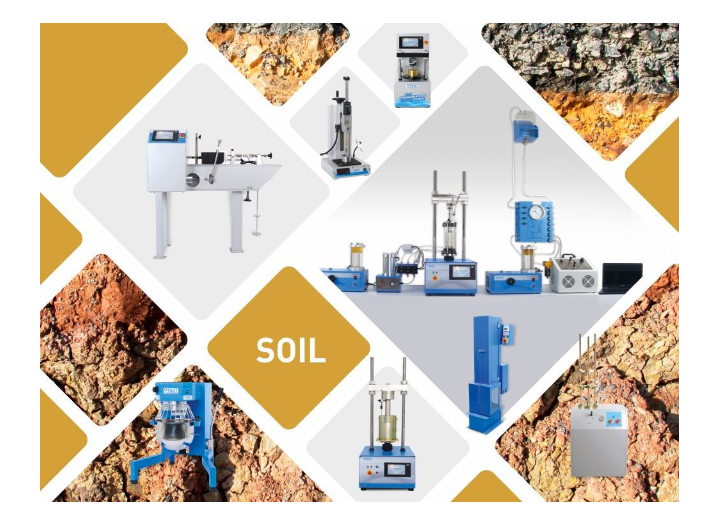
Many activities of man result in soil pollution. Some of the substances released that causes the pollution are from waste from mechanical workshops, oil spillage, overapplication of agrochemicals like fertilizers, wastes from industries, sewage sludge etc. Some of these waste contribute heavy metals into the soil. These pollutant cause degradation of the soil, microbs are distroyed and food produced from such an environment contain most of these heavy metals which make such produce unconsumable. Apart from these, most of these materials are washed into water bodies which result into death of aquatic organisms, makes the water polluted, unsafe for usage by human and agricultural activities.
Due to the fact that most crops produced are grown from the soil, this soil continue to degrade as the nutrients are mined due to continuous cropping without replenishing the nutrients. Also, when farmers plant crops, they over apply fertilizers. This is because most farmers are novice, they do not know the nutrient status of the soil and do not calculate the amount of nutrients needed per crop. Most commercial farmers do not want to do soil test because they see it as a way that syphon money from their pocket, thus, increasing cost of production. Hence, there is need for soil test.
Soil test is the determination of the physical, chemical, biological and minerological measurement of soil properties inorder to make prediction on agricultural productivity or any other uses of the soil.
Soil testing is not only based on agricultural issues, but also extend to environmental and civil engineering. In civil engineering, soil test results, especially the textural class aspect gives information on the type of soil on which construction of houses, roads, bridges etc are to be carried out. It also helps in determining the types of materials to be used for the construction.
CONCEPTS OF SOIL ANALYSIS
There are two major ideas in soil analysis. They are :
1. Soil testing
2. Soil testing programme
Soil testing involves the analysis of soil in the laboratory, whereas, soil testing programme involves a chronological programme targeted at understanding the soil and other factors that could be responsible for the soil testing result and eventual proper interpretation and recommendation from the soil analytical result. Also, in soil testing, after sampling, fertilizer recommendation is made. While in soil testing programme, series of steps are involved which have bearing with soil chemistry and the environment before fertilizer recommendation is made.
SOIL TESTING PROGRAMME
The concept of soil testing programme is based on the fact that soils of different ecology differs in their chemical characteristics. These differences result in differences in the rate at which the soils would release and make nutrients available for plant use.
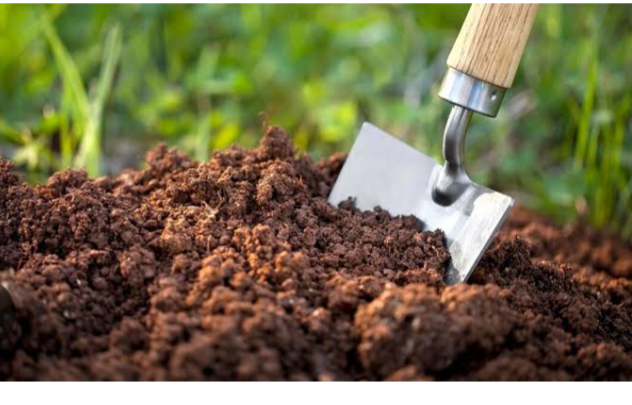
IMPORTANCE OF SOIL TESTING PROGRAMME
1. It gives a concise information about the nutrient applied and mobilized/released to crops
2. It helps in drawing up a balance sheet and practical productivity curve for each soil every year
3. It helps in the identification of the weaknesses and strenght of a soil
4. It helps in improvement of the soil status inorder to bring about maximum productivity
BASIC COMPONENTS OF SOIL TESTING PROGRAMME
There are five basic components of soil testing programme.
1. Background research
2. Soil sampling and sampling techniques
3. Soil analysis and its components (development of extractants, correlation and calibration)
4. Interpretation of analytical data
5. Fertilizer recommendation only for agriculture.
1. BACKGROUND STUDY/RESEARCH: This is getting information on where the soil is coming from. Soil survey, classification, mineralogy and characterization, all will give details of the geological formation, mineralogical composition, physical and chemical properties of the soil. Factors affecting soil formation also imposes their effect on the soil. Therefore, information on the ecology, weather condition of the area, vegetation present in the area should be studied. The type of vegetation growing on the soil can be used to predict the fertility status of the soil to an extent. Some plants can tolerate acidic soil, some waterlogged soil, and can also indicate the deficiency of a particular nutrient in the soil.
Likewise, human activities such as the period since fertilizer application had being carried out on the soil, lenght of time the land had being under farming etc can all provide background information of the site soil.
Background information of the soil is very important because of the heterogeneity of the soil. This gives reason why random sampling are usually recommended in chemical, physical and biological survey. It is generally assumed that soil variation occurs gradually across large field or so called uniform strata of the field. Some sources of soil heterogeneity include: parent materials, vegetation, animal activities, human activities, slope, cropping history, method of fertilizer application, and management practices.
2. SOIL SAMPLING AND SAMPLE PREPARATION: Soils are heterogeneous in nature. Wide variation may occur within a small area of land. In sampling soil, a true representative sample is taken from the area of land.
There are four types of soil sampling. They include:
1. Judgement sample
2. Simple random sampling
3. Stratified
4. Systematic sampling
1. JUDGEMENT SAMPLING : The scientist uses his own judgement and experience to decide what parts of the site to sample that will in his judgment present a representative picture of the whole field. This method is good to use for small piece of land. The larger the sample site becomes, the more difficult and time consuming the representative sampling becomes.
2. SIMPLE RANDOM SAMPLING: This sampling method is more precise compared to judgment sampling. It is less biased. It is recommended when soil differences are not so obvious. It can be used on a small experimental plot where high accuracy is needed.
3. STRATIFIED RANDOM SAMPLING: This method is used based on different observable variations occurring on the site. For example eroded areas, slopiness, poor yielding spots, river course etc. This land is segmented into various strata in which simple random sampling is carried out.
Accuracy increases as stratification becomes more defined. The samples from the strata are collected separately from one another for analysis. The number of sample to collect from the sampling area depends on the sampling unit. For example, If 20% of the sampling area is the sampling unit, then 20% of the sample to be collected from the sampling area will be collected from the strata.
4. SYSTEMATIC SAMPLING: This type of sampling is more accurate, easy to use and it is used to take soil samples that are equidistant from each other. But it can also be inefficient especially in cases when a fertile gradient exist. It cannot be applied to sloppy field or field with drainage problems.
SAMPLE PREPARATION
Soil samples are usually collected using blades, tubes or auger and polythene bags with label on the field. The following steps are employed when sampling and analysing the soil in the laboratory.
i. Sample collection
ii. Air drying of samples
iii. Grinding
iv. Seiving
v. Storage
i. SAMPLE COLLECTION : Samples are collected using spade or auger.
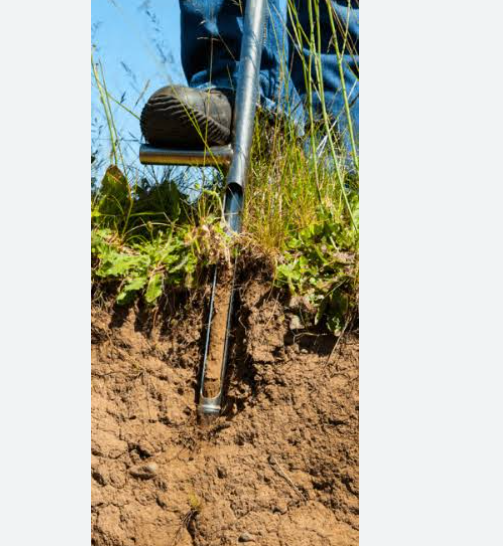
ii. AIR DRYING OF SAMPLES : After sampling on the field, the soil is air dried. Certain precautions must be followed when drying.
a. Do not dry in direct sunlight
b. Large soil clods should be broken down for drying
c. Air drying takes place between 3 days (for sandy soil) to 2 weeks ( for clay soil)
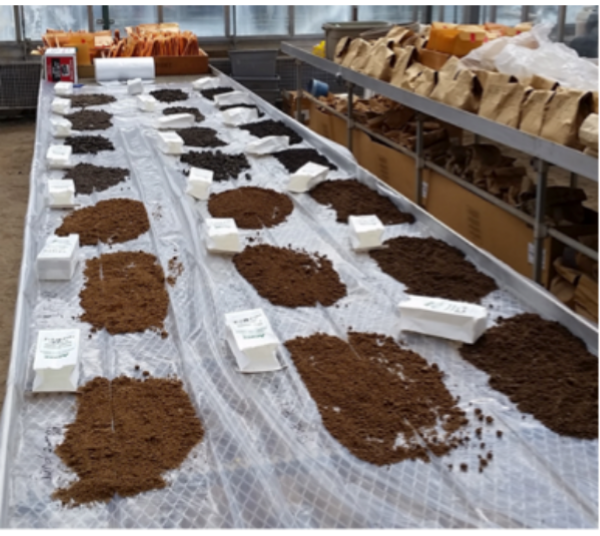
iii. GRINDING: Air dried samples are crushed in mortar with pastle. Care must be taken not to crush soft gravel
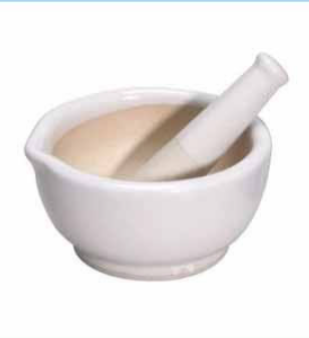
iv. SEIVING: Grinded air dried samples should be seived with 2mm sieve. For organic carbon and total nitrogen, finer soils of 2mm sieve should be used by passing it through 0.5mm sieve. The sieve should be made of brass stainless or plastic sieve. For micronutrients, plastic sieve should be used.
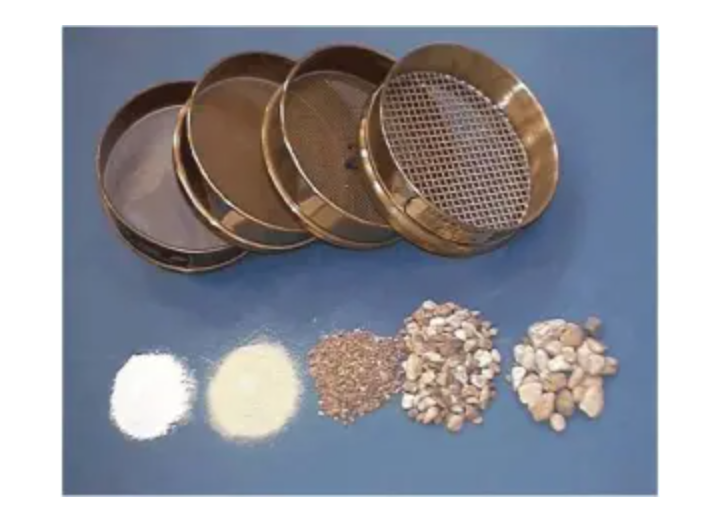
v. STORAGE: The sieved soil should be thoroughly mixed and stored in a well labelled plastic bags or bottles till time of analysis.

3. SOIL ANALYSIS
SELECTION OF EXTRACTANTS
Extractants are solutions which may be organic , inorganic acid, base and salt or their combination that can remove nutrient element in their available form
SUITABLE EXTRACTANTS: This is an extractants with a high positive correlation between available nutrients and plant uptake of nutrient or relative yield of the soil. The movement of nutrients from soil to plant could be by:
i. Diffusion
ii. Mass flow
iii. Root extension ( more important in phosphorus utilization)
The type of extractants used depend on the focus of the analysis. The focus could be
i. Total elemental analysis
ii. Determination of the elements in forms available to plants.
i. TOTAL ELEMENTAL ANALYSIS : This is done after bringing the soil samples into solutions either by acid digestion or by fusion with agents like Na2CO3 or Na2O2. The purpose of total elemental analysis is to determine the relative abundance of the element in a given soil
ii. DETERMINATION OF THE ELEMENTS IN FORMS AVAILABLE TO PLANTS : The chemical composition of plants reflects the essential elements, which are necessary for plant growth and reproduction. For an element to be regarded as essential, three criteria are required:
a. A plant cannot complete its life cycle without the element
b. No other element can perform the function of the element, and
c. the element is directly involved in plant nutrition.
These essential elements which are 16 or atimes 17 in number can be grouped as macro and micro elements for plants. They can be determined using soil and plant analysis. These elements are absorbed by plant in different ionic forms as they dissolve in water.
DEVELOPMENT OF EXTRACTANTS
Extractants are used to evaluate essential elements available to plants. The prescribed extractants are designed to remove (extract) a portion of a soil nutrient that has been correlated with a measure of plant growth (e.g. dry matter production) in regional field trials.
CHARACTERISTICS OF SUITABLE EXTRACTANT
For rapid routine test, the recommended extractants must have the following characteristics :
i. The extractants should rapidly dissolve and must be time dependent.
ii The extractants should maintain the organic matter and the soil in a state of flocculation so that the extractants does not distroy the organic matter in the soil
iii. The extractants should avoid re – precipitation of the dissolved phosphorus or hydrolysis of the organic phosphorus
iv. It should contain no excess salt, buffers, ions, that interfere with analytical interpretation
v. It should be easy to prepare, easy to store and easy to dispose off.
EXAMPLES OF EXTRACTANTS
A. Phosphorus extraction
a. Dilute acid fluoride – Bray’s P
b. Mehlich-3 Reagent
c. Olsen reagent.
B. Potassium, calcium, sodium, potassium, magnesium and zinc extractants –
a. Mehlich-1 Reagent
b. Silver Thiourea
C. Potassium, calcium and magnesium extractant-
a. Mehlich-11 Reagent
b. Neutral normal ammonium acetate etc
D. Potassium, phosphorus, zinc, iron, cupper, and molybdenum extractant-
Ammonium bicarbonate with DTPA
E. All micronutrients extractant-
DTPA Triethanol amine
F. Potassium and phosphorus extractant-
Ammonium bifloride. etc. G. Micronutrient extractant- chelate
CHELATE AS MICRONUTRIENT EXTRACTANT
Chelate agent is used to test for micronutrient cation.
METALIC CHELATE: These are cyclic structure of metal atoms and organic components in which the organic components are held together with varying degree of strenght from rather loose bonding force to the strong metalic bond.
CHARACTERISTICS OF CHELATES
a. Metal chelate are soluble in water.
b. Chelate exhibit buffering characteristics.
c. Chelate used in agriculture dissociate at varying degree
d. Solubility of metals is increased in combination with cheating agents
e. The organic compound in chelate is absorbed by plant through the plant root hairs
ACTION OF CHELATE ON METALS
i. They decrease the activities of metallic ion in solution by making them non effective.
ii. Chelate increases the solubility of metals in water when they combine.
Examples of chelate include: EDTA, DTPA, CDTA, EDDHA.
EDTA: Ethylene Diamine Tetra Acetic acid
DTPA: Diethylene Triamme Penta Acetic acid
CDTA: Cyclohexa Diamine Tetra Acetic acid
EDDHA: Ethylene Diamine Di (O hydroxyl pheniyl) acid.
EDTA and DTPA are the most effective extractants because:
a. Their pH can be controlled
b. They minimally attack lime and mines
Metallic ions (micronutrients) commonly cheated are iron, zinc, copper and manganese.
CORRELATION STUDIES AND CALIBRATION
CORRELATION: This is the estimation of the degree of relationship between the extractable nutrients and plant uptake under greenhouse or field condition. Correlation study is used to get suitable extractants analysis.
Correlation coefficient (r) : This indicate how best extracting solutions predict plant uptake. The higher the ‘r’ value, the better the method is judged.
CALIBRATION
SOIL TEST CALIBRATION : This refer to the relationship between soil testing value and yield response due to fertilisation. In calibration studies, the term critical or optimum level is always used.
CRITICAL LEVEL: This is the soil test value above which response to plant nutrient is not expected and below which a large yield responses can be obtained with adequate supply of nutrient.
The difference between correlation and calibration study is that correlation study is carried out to establish a suitable extractant while calibration study is used to know the level at which yield will fall.
4. INTERPRETATION OF SOIL TEST RESULT
The altimate goal of soil test is to provide a guide for soil fertility evaluation using experimental determination relationship between soil test value and crop growth.
The interpretation given in a soil test must be specific enough to meet the requirement of the specified crop and general enough to conform with application of fertilizers to many field.
From calibration curve, the degree of sufficiency of a soil parameter is known, soil characteristics, soil behaviour and interaction between soil and crops are tools used to make interpretation.
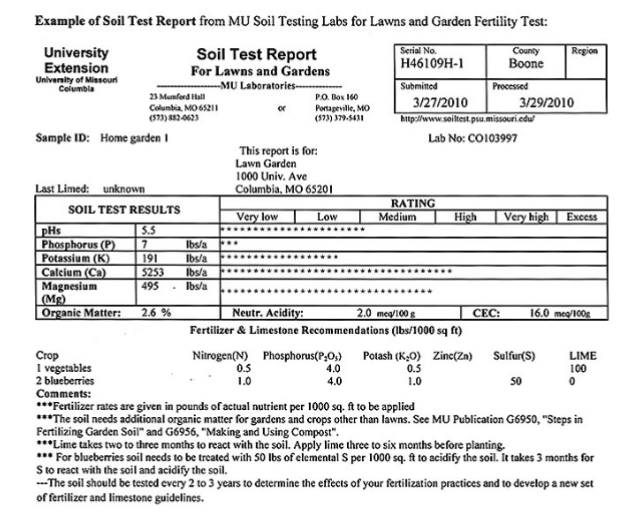
CRITERIA FOR INTERPRETATION
The fundamental criteria for interpretation of soil analysis include:
a. Measure of land clearing: The area of land cleared will determine the amount of samples to take. It will give better information about variability occurring on the field.
b. How representative was the sampling: Soil samples should be taken from various point on the field to actually represent the whole field.
c. The sampling depht: The depht of crop root should be considered before taking representative samples. Mostly, the depth of 0-15cm is taken but may exceed this depht.
d. Crop and crop spp to be planted: All crops have their own critical level, below which deficiency symptom will show and above which the crop will negatively be affected
e. What method of soil analysis was used: Each extractants have different critical level.
f. The crop history of the soil: crop history will give a full information on the trend of yield which had being obtained from the site. This will assist in fertilizer application to obtain higher yield beyond result obtained initially.
G. The soil slope: This should be considered so that when fertilizer recommendation is made and fertilizer applied at the recommended rate, it want be washed away by rain.
H. Critical level of indices of availability of nutrient: At what critical level will there not be response and at what level will there be response. All these are used for soil analysis interpretation along side the physical and chemical characteristics of the soil. They are also used for fertilizer recommendation programme.
5. FERTILIZER RECOMMENDATION
It is important that farmers know the philosophy of the fertilizers they want to apply to their farm and the critical limit of each crop.
Fertilizers have two major philosophies
i. SOIL FERTILIZATION: This is the building up of soil nutrients to make it fertile for optimum crop growth and yield.
ii. CROP FERTILIZATION: This is the specific supply of fertilizers to the growing crops to obtain optimum yield.
OTHER FACTORS CONSIDERED WHEN MAKING FERTILISER RECOMMENDATION
Apart from knowing the fertilizer philosophy, other factors farmers must note include:
i. The model used for the fertilizer recommendation
ii. What type of fertilizer to use
iii. Rate of fertilizer application
iv. Time of fertilizer application
v. Method of fertilizer application
vi. Type of cropping system.
